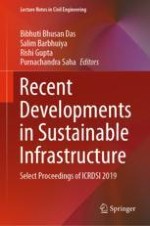2021 | OriginalPaper | Chapter
Analysis of Seepage from a Triangular Furrow with Negligible Freeboard Considering Soil Capillarity Using Inverse Hodograph and Conformal Mapping Technique
Authors : Kshyana Prava Samal, G. C. Mishra, Nayan Sharma
Published in: Recent Developments in Sustainable Infrastructure
Publisher: Springer Singapore
Activate our intelligent search to find suitable subject content or patents.
Select sections of text to find matching patents with Artificial Intelligence. powered by
Select sections of text to find additional relevant content using AI-assisted search. powered by
